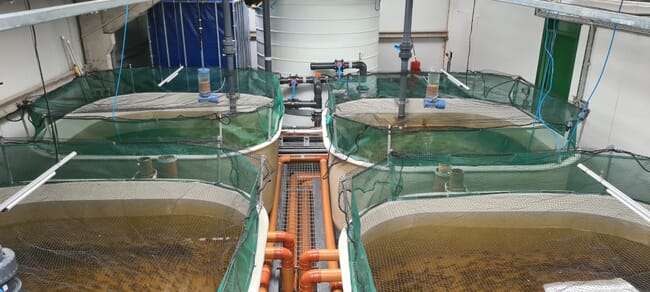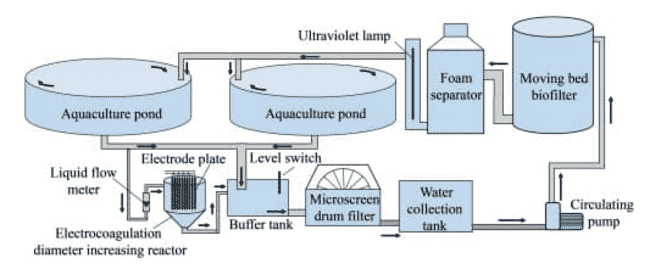
Total suspended solids (TSS) can affect water quality in recirculating aquaculture systems. TSS with small particle sizes in traditional RAS can accumulate rapidly, resulting in elevated levels of ammonia and nitrite nitrogen – limiting the aquaculture capacity of the RAS.
Dr Xu Jianping from Prof Sun Jianming's team at the Institute of Oceanology of the Chinese Academy of Sciences (IOCAS) has constructed a linkage control system where electrocoagulation diameters increase along the reactor and microscreen drum filter (EDIR-MDF).
Electrocoagulation (EC) was used for the first time to increase the particle size of TSS in RAS and improve the filtration efficiency of the microscreen drum filter without reducing the filtration pore size.
The study was published in Journal of Water Process Engineering.
The researchers investigated the application of the electrocoagulation and drum filter linkage control system in a RAS containing whiteleg shrimp (Litopenaeus vannamei).
The proportions of suspended solid particle size that were greater than, or equal to 75 μm in aquaculture water were 23.39 percent and 14.33 percent before and after EDIR treatment. Based on these results, applying EC technology can improve the removal efficiency of TSS and reduce the deposition of small-particle-size suspended solids in RAS.

In addition, the researchers found that the average removal efficiency of RAS for TSS, chemical oxygen demand, ammonia, and nitrite was increased by 24.07 percent, 24.30 percent, 8.94 percent, and 1.39 percent, respectively, improving the water quality of the aquaculture pond.
The daily growth rate and feed conversion ratio of the shrimp were 0.13 and 0.15 cm/d (0.17 and 0.18 g/d), and 1.11 and 1.08, respectively, before and after EC application.
The use of the ECR-MDF linkage control system optimised the water environment of the RAS and promoted the growth of the shrimp.




